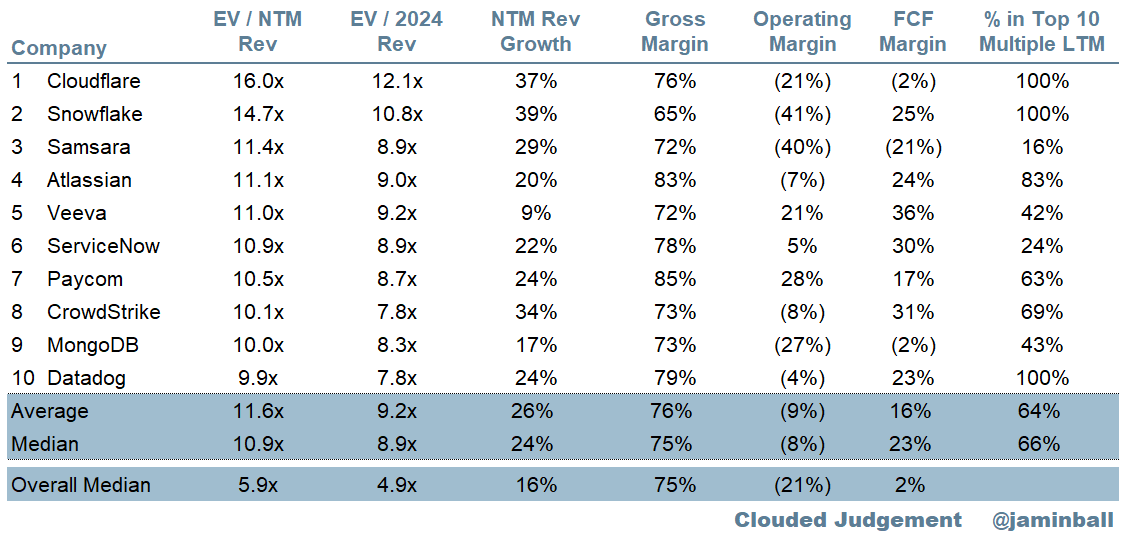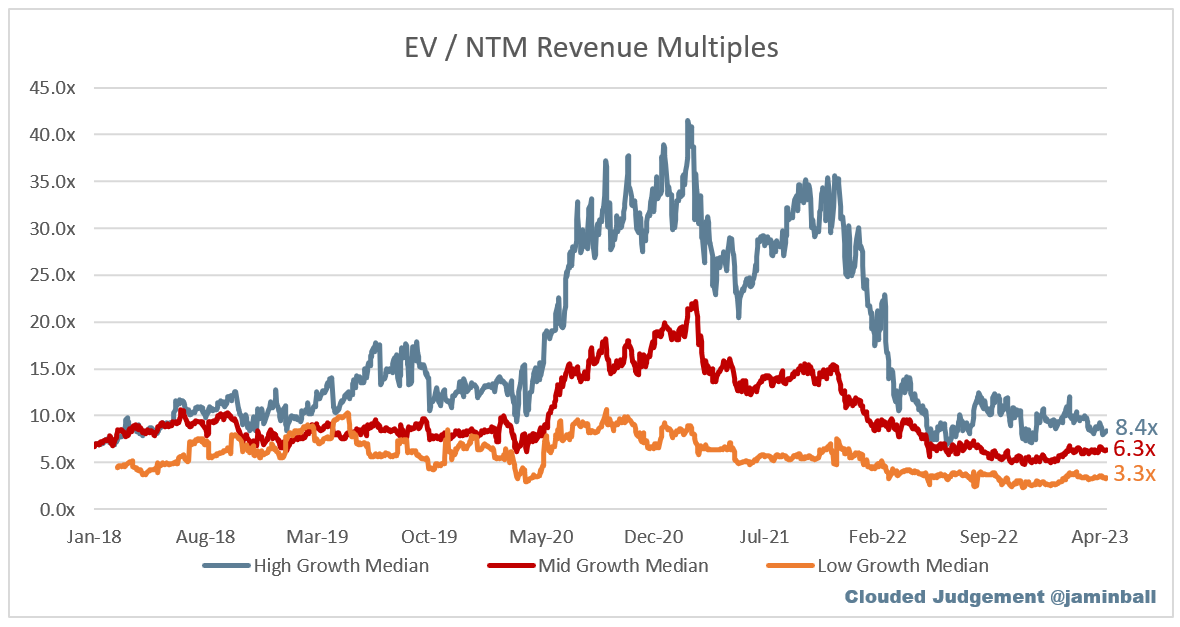Every week I’ll provide updates on the latest trends in cloud software companies. Follow along to stay up to date!
CPI / Fed Update
March CPI data came in this week. Headline CPI came in at 5.0% YoY vs consensus of 5.1%. Headline CPI has now fallen for 9 consecutive months. Core CPI came in at 5.6% YoY vs consensus of 5.6%.
The Fed minutes from the March meeting were also released. Interesting, those minutes showed that the Fed expects the United States to enter a mild recession later this year. Time will tell how that effects their rate policy setting.
Net New ARR Slowdown
It’s no secret that cloud software businesses have seen headwinds over the last couple quarters. I wanted to quantify those headwinds by looking at the net new ARR companies added in Q4 ‘22, and comparing it to the net new ARR added in Q4 ‘21. As you can see in the chart below, companies on average add ~20% LESS net new ARR in Q4 ‘22 than they did 1 year prior. That is pretty significant. So far the anecdotal data I’m hearing for private companies in Q1 is not a whole lot better. Flat net new ARR added sequentially is considered a home run. Just about everyone facing declining net new ARR QoQ. The hard part is there’s not clear end in sight / light at the end of the tunnel. No one has visibility into when this trend reverses.
Cloud Optimizations
Morgan Stanley conducted a survey (not their quarterly CIO survey, something different) of 80 CIOs in the US and EU looking at the duration of cloud optimization. Their takeaway? Optimization efforts will last longer than anticipated, abating towards the end of the year vs mid year. Screenshot below
On the positive side, they called out CIOs expect a larger share of cloud penetration post optimization than pre optimization. Chart below:
Top 10 EV / NTM Revenue Multiples
Top 10 Weekly Share Price Movement
Update on Multiples
SaaS businesses are generally valued on a multiple of their revenue - in most cases the projected revenue for the next 12 months. Revenue multiples are a shorthand valuation framework. Given most software companies are not profitable, or not generating meaningful FCF, it’s the only metric to compare the entire industry against. Even a DCF is riddled with long term assumptions. The promise of SaaS is that growth in the early years leads to profits in the mature years. Multiples shown below are calculated by taking the Enterprise Value (market cap + debt - cash) / NTM revenue.
Overall Stats:
Overall Median: 5.9x
Top 5 Median: 11.4x
10Y: 3.4%
Bucketed by Growth. In the buckets below I consider high growth >30% projected NTM growth, mid growth 15%-30% and low growth <15%
High Growth Median: 8.4x
Mid Growth Median: 6.3x
Low Growth Median: 3.3x
Scatter Plot of EV / NTM Rev Multiple vs NTM Rev Growth
How correlated is growth to valuation multiple?
Growth Adjusted EV / NTM Rev
The below chart shows the EV / NTM revenue multiple divided by NTM consensus growth expectations. The goal of this graph is to show how relatively cheap / expensive each stock is relative to their growth expectations
Operating Metrics
Median NTM growth rate: 16%
Median LTM growth rate: 26%
Median Gross Margin: 75%
Median Operating Margin (21%)
Median FCF Margin: 2%
Median Net Retention: 116%
Median CAC Payback: 30 months
Median S&M % Revenue: 47%
Median R&D % Revenue: 28%
Median G&A % Revenue: 18%
Comps Output
Rule of 40 shows LTM growth rate + LTM FCF Margin. FCF calculated as Cash Flow from Operations - Capital Expenditures
GM Adjusted Payback is calculated as: (Previous Q S&M) / (Net New ARR in Q x Gross Margin) x 12 . It shows the number of months it takes for a SaaS business to payback their fully burdened CAC on a gross profit basis. Most public companies don’t report net new ARR, so I’m taking an implied ARR metric (quarterly subscription revenue x 4). Net new ARR is simply the ARR of the current quarter, minus the ARR of the previous quarter. Companies that do not disclose subscription rev have been left out of the analysis and are listed as NA.
This post and the information presented are intended for informational purposes only. The views expressed herein are the author’s alone and do not constitute an offer to sell, or a recommendation to purchase, or a solicitation of an offer to buy, any security, nor a recommendation for any investment product or service. While certain information contained herein has been obtained from sources believed to be reliable, neither the author nor any of his employers or their affiliates have independently verified this information, and its accuracy and completeness cannot be guaranteed. Accordingly, no representation or warranty, express or implied, is made as to, and no reliance should be placed on, the fairness, accuracy, timeliness or completeness of this information. The author and all employers and their affiliated persons assume no liability for this information and no obligation to update the information or analysis contained herein in the future.

















Do you think optimizing will include switching service? Isn't google cloud under cutting AWS and could therefore gain from this?
Can you define "cloud optimizations"? Trying to make sense of that section. Thanks!